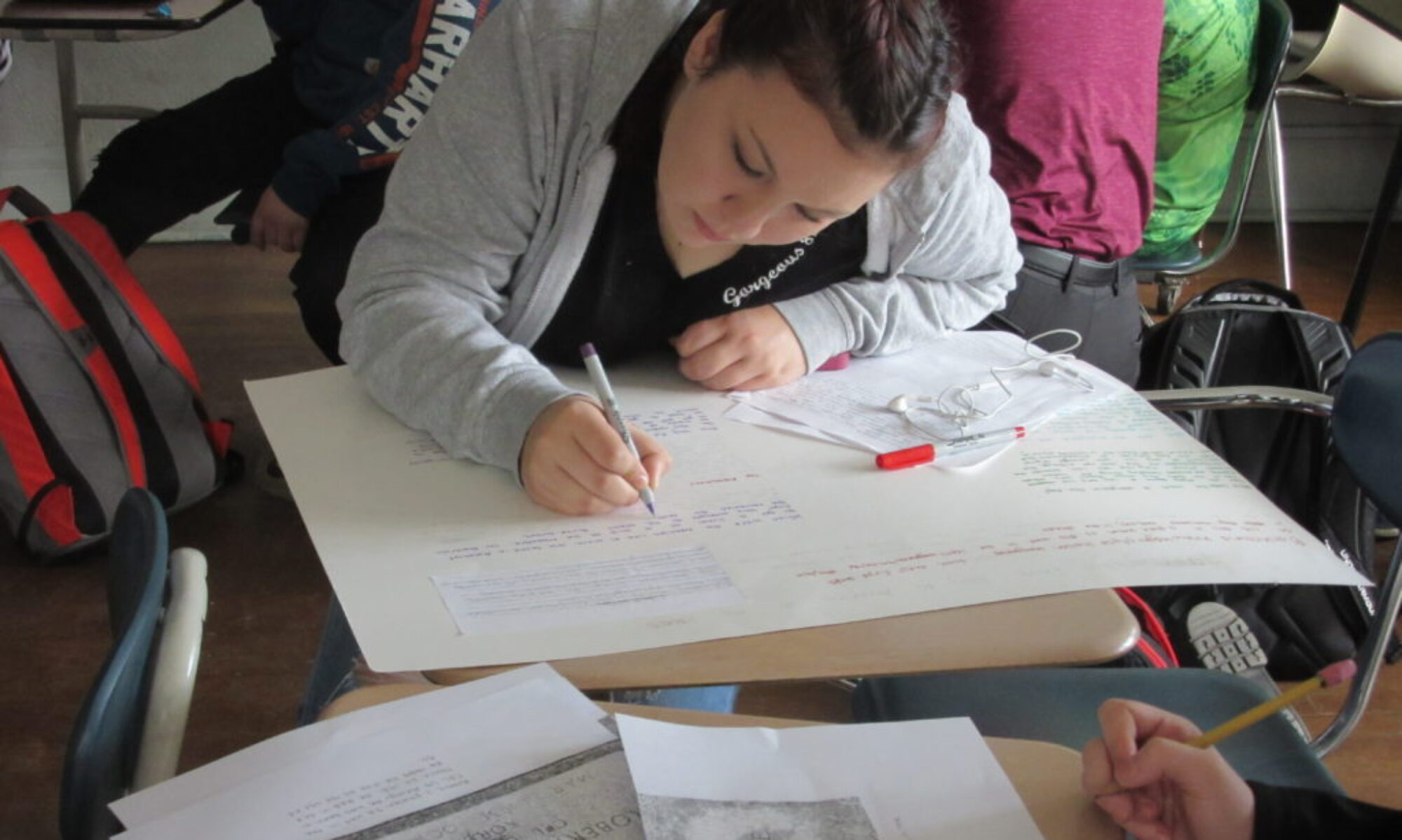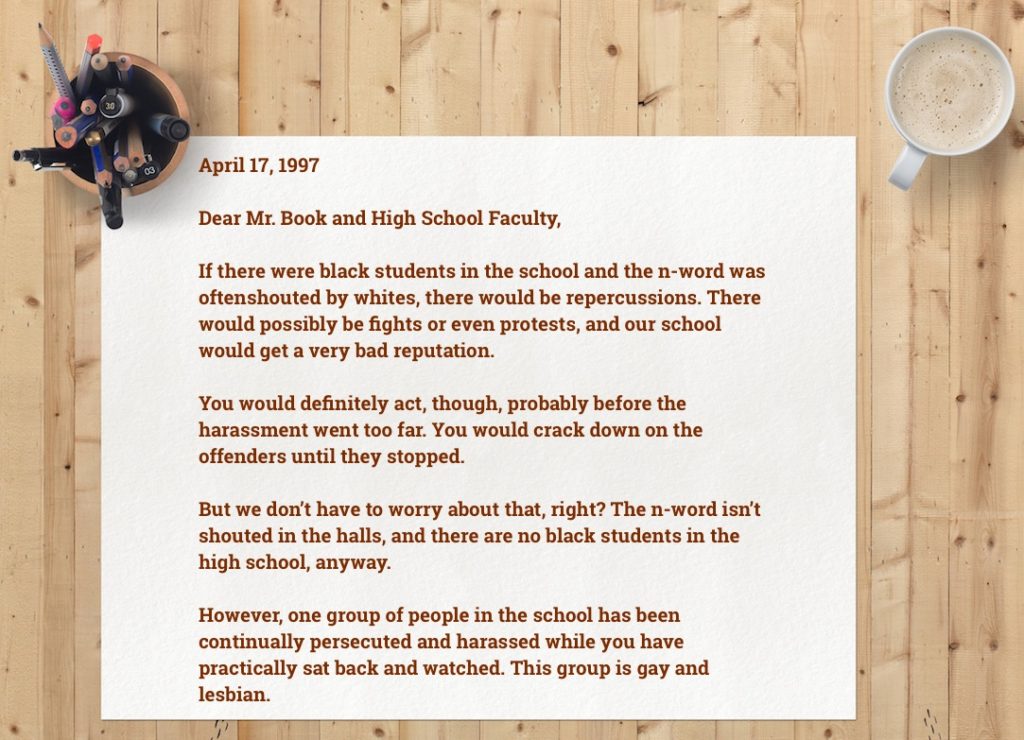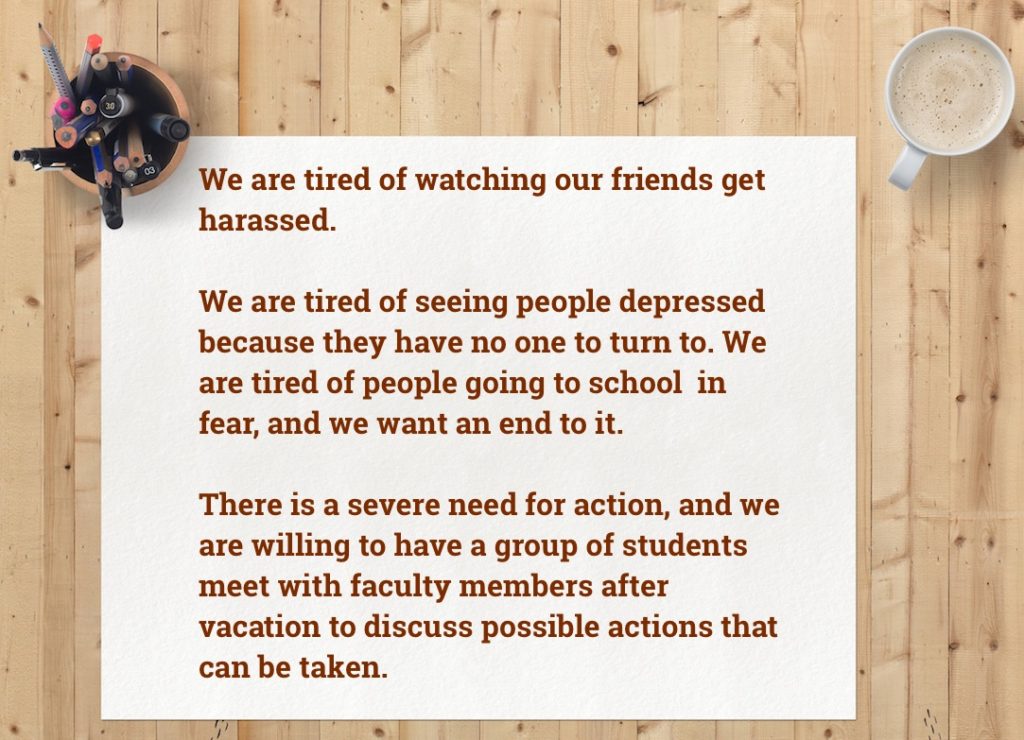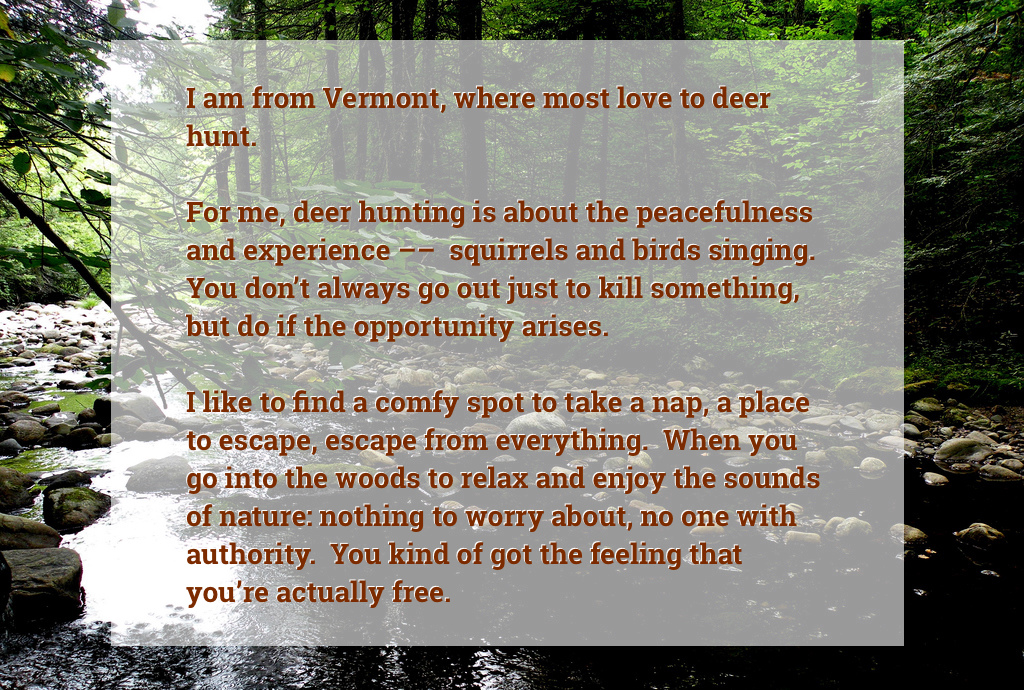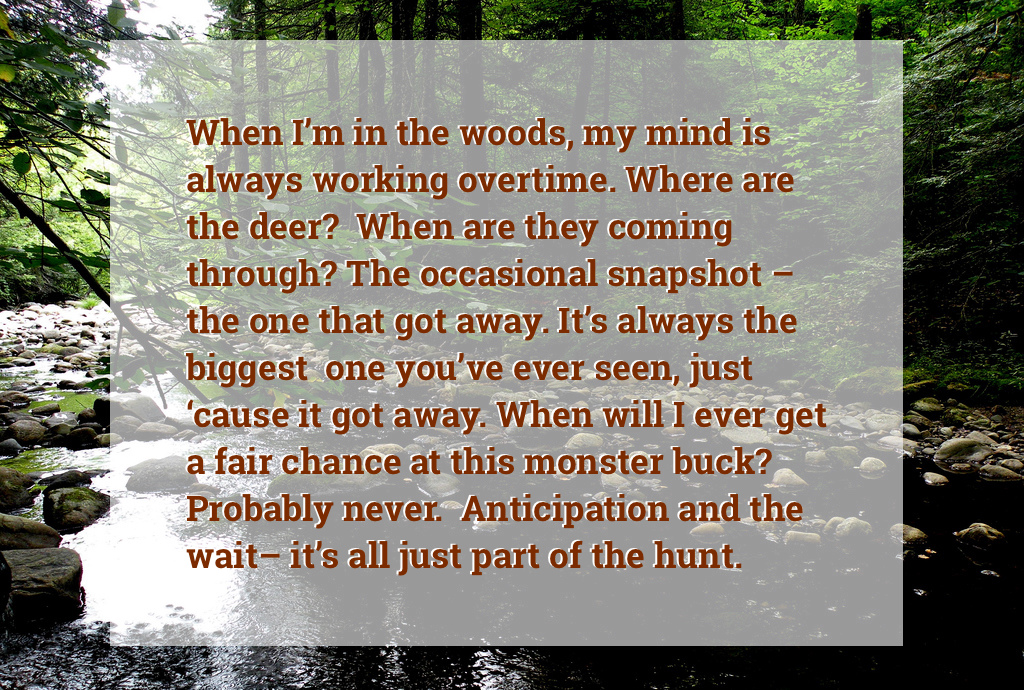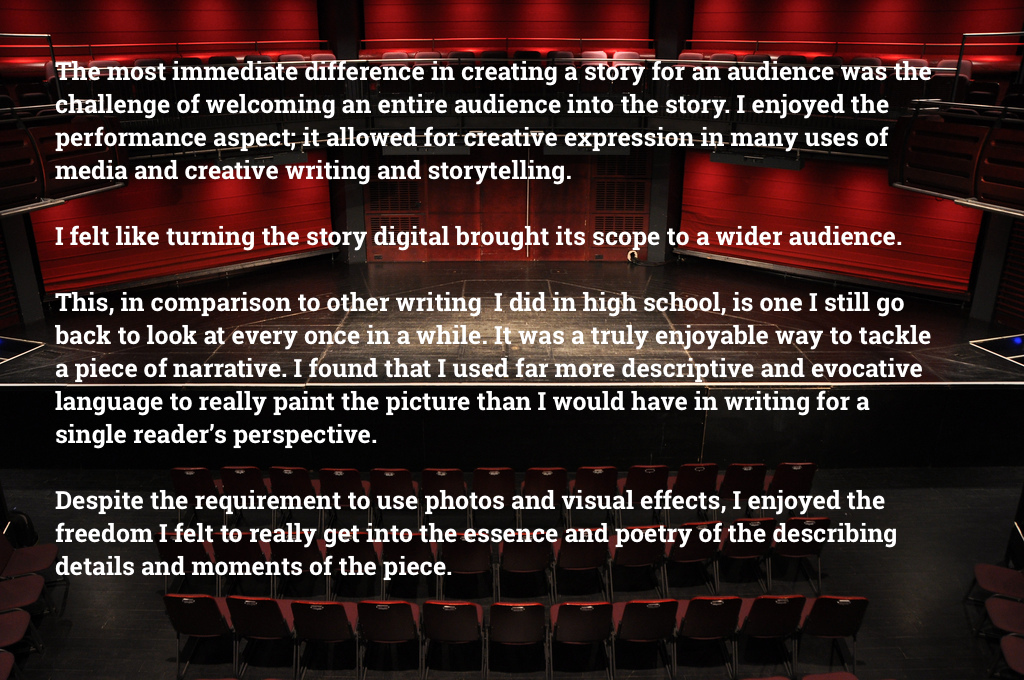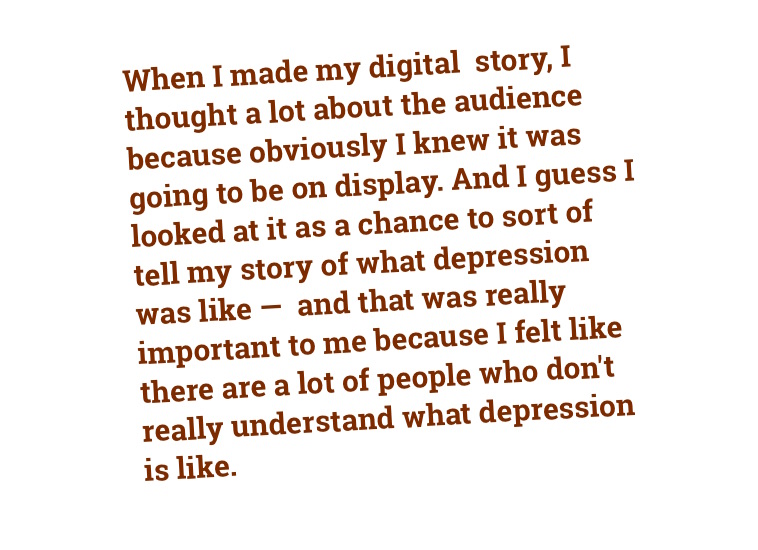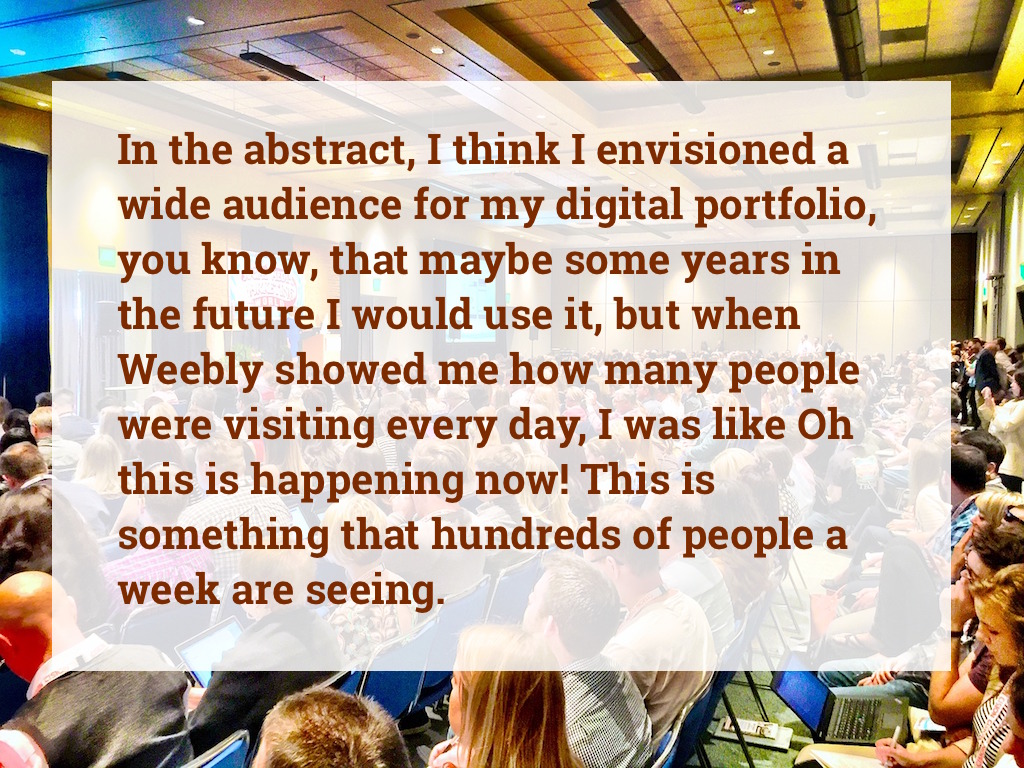Why digital composition matters
 I’d like you to think back to your days as a student. What kinds of writing did you do? Who read it? What made it important to you? And what made it important to the world?
I’d like you to think back to your days as a student. What kinds of writing did you do? Who read it? What made it important to you? And what made it important to the world?
If you’re like most people, you’re probably drawing a blank right now. Some of today’s students, though, can clearly articulate just how and why their writing is important. And we don’t mean writing as you might imagine, but rather digital composition: digital stories, digital portfolios, documentary films, and of course, podcasts. For each of these, there is a real audience, one beyond the more typical audience of one, the teacher.
[soundcloud url=”https://api.soundcloud.com/tracks/301818285″ params=”color=ff5500&auto_play=false&hide_related=false&show_comments=true&show_user=true&show_reposts=false” width=”100%” height=”166″ iframe=”true” /]
Full transcript appears below.
Today we’ll visit with writers Bonnie Kaplan and Barry Lane and some of my former high school students, all of whom discuss what they’ve noticed about the power of these media and the importance of authentic audience. And along the way, we’ll sample some of these powerful digital creations.
Welcome to Keeping it Real.
Writing for an authentic audience has become something of a trend in the world of education. A quick Google search of those buzzwords yields nearly 67,000 hits. So, writing beyond the usual reasons we ask students to write – to express their ideas to their teacher for the purposes of a grade – has become paramount.
I’ve been thinking a lot lately about my own experience as a student of writing and have been trying to remember examples of writing I completed. So, I went through the list of teachers etched somehow indelibly in my mind, and wracked my brain for one paper, one story, I wrote – but I couldn’t do it.
And then, suddenly, a memory emerged.
It was 1969; I was in 3rd grade, and girls were not allowed to wear pants to school. My father was really active in his local union, and so even in 3rd grade, I thought about opportunities to organize.
One morning after a particularly dull music class with Mrs. Angus at her piano, leading us in endless repetition of “Drill Ye Tarriers, Drill,” my friends and I decided it was time to take action. Taking my father’s example, I drew up a petition, and out on the playground asked who would like to sign our request to be allowed to wear pants to school.
Almost all the girls signed that petition — and I was really excited, I was energized, I was proud – but not for long. Instead of reading the next chapter of Charlotte’s Web after lunch, our teacher, Miss McKay, confiscated our petition.
I remember sitting at my desk, absolutely deflated, as I had to listen to her lecture us about the virtues of femininity. The only girls she still respected, she said, were the two who had not signed our petition.
So, flash forward 28 years. I was the teacher.
My writing students had just set goals for the day, and I expected them to work on essays, poetry, fiction, maybe even embark on a research project, but I never expected this, from Palmer Legare. He wrote:
What good is writing if it just ends up sitting in a folder somewhere until it is recycled? I’ve always seen myself as someone who wants to make a difference, to fight against injustice wherever I find it. I want to write to change the world.
Wow. No teacher-designed prompt could have elicited such a response. And I wondered what it was I was supposed to do.
How could I help Palmer take real political action since I hadn’t even tried since that failed attempt in third grade? How, then, could I teach Palmer to do it?
I couldn’t. Of course I couldn’t. All I could do was get out of his way. And so I became a midwife of sorts, an encourager, a supporter — but in the end, he was the one who would have to do the hard work of bringing some kind of new life into our school, to change our world.
And he did.
So, Palmer would bring me his latest draft early in the morning, and at the first break, he’d pop in to ask what I thought. And after school, we’d frequently talk about the issues and consider what strategies might work, and then he’d write some more.
I watched as Palmer circulated his letter among fellow students. Some already knew the issues, a few firsthand. In the end, about 40 students signatures appeared at the bottom of the page; almost half the student body at our small high school – in 1997.
Fortunately, Miss McKay was not nearby.
Ultimately, Palmer’s petition resulted in widespread publication of our district’s anti-harassment policy. Our principal had highlighted the pertinent sections, and copies appeared on more bulletin boards than we knew we had. Sexual orientation was mentioned as just one of many categories against which our school did not discriminate and about which we would not permit harassment. And the policy had been in place for several years, but few students and only some teachers actually knew that sexual orientation was included. That morning after April vacation, everybody knew, and the halls were just buzzing.
Obviously Palmer was really excited but tempered his enthusiasm. He knew full well that this was just the very first step in transforming our schooling to a safe place for everyone — something that had not yet been accomplished in mainstream American culture, let alone its teenage subculture.
But something was clearly happening — people were talking — many, of course, were still openly hostile, but Palmer discovered allies he never knew he had — and it became clearer and clearer to him that his writing was having an effect, that he was doing what he set out to do: to write to change the world -– in this case one teacher, one student at a time.
When I look back on writing a petition as Ms. McKay’s third grade student and on Palmer’s experience of writing to change the culture of his high school, it becomes so clear that what made both instances significant was the presence of a real audience, an audience beyond the teacher.
Many teachers have recognized the value of such an audience, and I became curious about how this plays out in the lives and the work of my own students, so I talked to a number of them, and these conversations, combined with other research, have convinced me, today more than ever, that it is absolutely imperative for our students to find a real audience for their writing.
And fortunately, the advent of digital technologies made this easier than ever.
They can publish digital stories on YouTube, create documentary films for perhaps a public evening screening, record podcasts to be aired on a local radio station, or curate digital portfolios of their best work. And in all of these instances, students engaged in meaningful work for an audience beyond just their teachers are motivated and are inspired to produce effective writing.
National Writing project author Bonnie Kaplan:
For me, the excitement happens with the power of publishing for an authentic audience.
Students create their multi-modal pieces that will be presented to a community group of families and friends, other people’s families and friends and teachers, strangers – and for some, their pieces are published on school websites. So there’s that immediate need for their piece to be taken seriously. It’s not a traditionally assigned essay that gets handed in to the teacher for a grade and bang, it’s done! And maybe that’s the key.
When a student presents a piece of digital writing, the audience has moved out of the classroom and the gradebook.
Digital storytelling: Classroom snapshot 1.
Cheryl pulls me aside when Cody struts out of the classroom. Maybe to get a drink of water, to flirt with his newest girlfriend, or to show off the new wolf tattoo on his forearm. No one knows for sure, but Cody pretty much does what Cody wants, and as his teacher, I am learning to work around it.
“Whatever you do, don’t make Cody read out loud,” Cheryl whispers. While she is a paraprofessional in the class to help another student, she knows everyone else’s quirks, too; she’s worked with this group for years. “He won’t do it. It’s only asking for trouble, and this is not a battle I would pick.”
The leaves on the maple outside my classroom, tinged with yellow and red, flutter in the late afternoon breeze. I don’t want to believe Cheryl, but this early in September, I don’t push it.
By the end of December, students are sitting at computers in the library, writing, searching through photographs, and looking for music to accompany their digital stories – multimedia projects that combine images, music, and the spoken word to relate an important event or experience.
And there, in the closed back office, I join Cody, the first student ready to record his voiceover.
Cheryl looks over at us, incredulous. Her eyes widen as she lifts her hands slightly, palms upward, punctuating the air with a “What’s that about?” gesture.
But it’s true.
Cody, who hates to read aloud, is adjusting his headset and getting ready not only to read — but also to record— his voice. Hesitant but determined, he begins.
I sit next to Cody as he reads, sentence by sentence, so he’ll end up with small sound bytes that can be moved to begin exactly when he has the right image on the screen. We work on this for the next few class periods, and finally his voiceover is complete.
When he matches the spoken word to the photographs he’s chosen, he’s pleased.
When we add an instrumental soundtrack, he’s really pleased.
For Cody, this wait was tolerable because he was working toward a goal which was to to create something that would ultimately be shared with a real audience and that compelled him to revise his work, to re-record again and again, and to settle for nothing but his best.
When I first began a digital storytelling project, my students and I considered the importance of audience when we planned an evening screening of their work to which friends, family and community members would be invited.
Orion Lay-Sleeper, who was one of my first students to create a digital story, recently reflected on “Sledding,” a powerful piece he created as a high school junior about 10 years ago.
This, he said, stood in contrast to other writing he did for a single audience: his teachers.
ORION LAY-SLEEPER:
Like Orion, Jeremiah Breer was one of my first students to create a digital story. His tackled a more personal topic to experience of living with and recovering from depression.
When we spoke recently, he noticed a significant difference between the writing he did ordinarily and the writing he did for his digital story.
JEREMIAH BREER: “I think a lot of the writing I did in your class wasn’t necessarily for an audience – even though I knew that you would read it, and I pretty much knew that you would appreciate almost anything that I wrote. Whereas if I’m writing for a wider audience, then I’m trying to get a specific message across and I’m anticipating how the audience is coming into it, to try to communicate with them as best I can.
When I made my digital story, I thought a lot about the audience because obviously I knew it was going to be on display. And I guess I looked at it as a chance to sort of tell my story of what depression was like— and that was really important to me because I felt like there are a lot of people who don’t really understand what depression is like.
People were always, you know, giving me these really easy solutions, like just do this, or just think happy thoughts, or whatever. I wanted to raise awareness of depression and I think what was most important to me was to convey to people just how extremely painful it is. I wanted to give people a glimpse of what it was like to suffer with it because I thought by doing that, it would elicit – or my hope was that it would elicit – some empathy from folks and help them understand a little bit better.
And then, my story ends with a hopeful note, because I’m one of the lucky ones, you know — I did get better, which unfortunately it doesn’t work out that way for everybody.”
Digital storytelling, Classroom snapshot 2.
Jeremiah is trying to find images to correspond to the poem he has written for his digital story. When he realizes that ordinary photographs can’t easily represent the abstractions he’s exploring, he decides to create his own images.
One morning he arrives to my class a few minutes early.
“You won’t believe it,” he says. “I was over in the computer room, working, and Mr. McSweeney was like, ‘Jeremiah, quit fooling around with Kid Pix. You’re supposed to be working on your digital story.’ It was the same thing every time a teacher walked through. ‘Aren’t you supposed to be doing some work? ‘No one could believe I was.”
Eventually Jeremiah is able to set straight all the adults who keep interrupting him, and he designs a series of abstract images. He imports them into iMovie and begins to establish transitions from one to another.

(As Mozart’s “Rondo for Piano in A Minor” begins, the screen is black. Then it fades to a black and white image. Dark circles crowd the lower half of the screen. Sharp lines stab them. A tangle of wiry shapes hover above, a menace. Black triangles snap at white space. Jeremiah’s voice begins.)
JEREMIAH BREER:
Darkness deep, walls steep. The current pierces you. Stinging passing through.
(Eventually the image fades to black, and after a second, a new one emerges– another tangled, tortured, chaotic mess, followed by another and another, each fading in from and out to black. Mozart’s music serves as a backdrop for the text and images of “Darkness Deep.”)
JEREMIAH BREER:
Dark water, overhead harsh. Heavy presses the sky above. To every rise, a wall. Defeated without conclusion Every effort crushing, every breath pinched. A land of empty stone, a sea of cold pebbles.
(Slowly the eerie, evocative melancholy of the melody becomes more optimistic as it intersects with language that describes, at last, a shift from depression to hope. The images become progressively lighter, as well, and colors replace blackness.)
JEREMIAH BREER:
If only a rest– a break from grief. Healing hand held only hope. From the clouds there came relief.
How digital portfolios support this work
Another type of digital composition involves the creation of digital portfolios: collections of purposefully chosen artifacts published online, the purpose of which is to reveal what students know and are able to do. So the very nature of these curated collections assumes an audience. [Two of] my former students spoke with me about the importance of carefully curating the contents of their digital portfolios.
TIMOTHY MUELLER-HARDER: If you’re creating something for somebody else, you have to look at the corpus of your work and decide what things you want to show to someone and then display them in an effective manner, conforming to your imagined perceptions of what they might want to see. And you also need to figure out what sort of idealized picture of yourself you want to portray through your work. And that’s true of any resume or portfolio – you filter out the things that you think portray a version of yourself that you don’t want to portray, and you emphasize aspects of yourself that you want to highlight.
KASSANDRA MORSE: You know, what I really like about the digital portfolio – and I’ve kind of come to realize this over the past couple years– is it honestly is a resume, but it’s more interactive and explorable – and I can showcase everything that I love to do and things that I’ve done in a more engaging way, instead of just a few sentences on a static page.
Weebly actually changed its format, and I was suddenly able to see the number of hits I was getting every day.
I do actually remember, even at the beginning I cared a lot about how it looked, and that’s something that I’m honestly thankful for now that I know how many people see it every day. So any time we finished anything in class, I went straight to the digital portfolio and uploaded it with an introduction and explanation for, you know, the mysterious audience on the Internet. I feel like everyone else in the class thought I was kind of too overenthusiastic, but I was actually really proud of what I had. The main thing that has changed now that I’m a college student is that I have the time and the resources to do things that I really love, so I’ve started creating an archive in projects that have no serious academic value. They’re just things I love to do, things like radio dramas and creative hackathon projects. I also love that’s it’s kind of an ongoing project. For as long as I keep doing cool things, I can keep archiving my work there.
But where does video composition fit into this?
Like digital stories, documentary film making projects give students an opportunity to build essential writing skills and to reach an authentic audience. Sharing his work with a white audience had a powerful effect on Henry Burke, who interviewed a Japanese-American community member, Vicky Yamasaki, whose parents were incarcerated in camps during World War II.
HENRY BURKE: It’s been over a year since we did this project, and I remember a lot of the history-related things to my documentary, because we created something you can watch over and over again, and I think that’s really something special. I think this project meant a lot more than reading a book or writing an essay because it’s something that you won’t forget, it’s something that really sticks with you, and I think that’s really important, especially if it’s a school project that you don’t have much interest in.
You know, we created the film not just for our teachers to see, but for other people to see as well – people from the public, all around Vermont. And I think a teacher would be critiquing it in a kind, specific, and helpful way, but an outside audience may be a little more harsh on how they give you criticism for your project, so it was a lot more pressure.

I think I put a lot more effort and time and also thought and understanding into producing a film, especially this film, because it had, you know, a broader audience that my teachers and peers, and the stakes were definitely higher, so I just thought about it a lot more than the average school project.
Lars Hammer told me he saw multiple benefits to the documentary film project he undertook, and an audience beyond justice teachers lead to increased engagement and better quality work.
LARS HAMMER: One project I particularly remember was a documentary newscast film about the Chinese cultural revolution. Students in the film posed as newscasters, historians, and citizens during the revolution. I thought it was a really fun and interesting way to learn about the time period, and by the end I certainly had a firm grasp of the material.

I think that this kind of learning allows students to share their writing with a wider audience, so this means providing feedback and varied opinions of different viewpoints from a bunch of different people. It also encourages a greater collaboration among students, so it’s increased critical thinking skills and group skills. It also encourages student creativity, so it’s not just another paper to write, and they can apply their skills and ideas and new and interesting ways. And it gets students more engaged and interested in their work, which in turn leads to a better quality product.
Megan Walker noticed that an authentic audience compels students to push themselves to really achieve excellence.
MEGAN WALKER: It pushes a student to do more, to work harder. It pushes a student to make it more available and accessible to a broader audience because you don’t know who it’s going to reach if you put it on Internet, whereas if you’re just handing it to teacher, you already know at least a little bit about what they’re looking for and what they want.

You’re also going to be continually trying to make it better, up until the deadline… Generally a student will work harder on both the writing and the production and making it more accessible if it’s for an authentic audience.
Gala Morse discovered that composing digitally created a new relevance for her writing.
GALA MORSE: It’s a really creative thing, writing– at least for me –– and creating things that are really tangible like podcasts and digital stories and documentaries and things that are really like products in the end–– that can really help with writing. I think a lot of a lot of people struggling with writing because it’s not relevant to them — and that is what makes it really tough.
I created a documentary film about project-based learning in our school, and I loved doing that project. I got to be very creative. Because I got so excited about it, I was able to write really well and I was really proud of myself. I was able to really put myself on the paper and then put that same story onto the audio, onto the video and create something I could show people and be proud of.

All of these conversations, all of my outside research has confirmed my belief in the power of a real audience. It compels documentary filmmakers to create their most appealing and engaging work. It allows digital storytellers to weave together narratives that move their audiences to laughter or tears or awe. It helps curators of digital portfolios spotlight their very best work on a public platform.
And above all – it enables writers to write with power, clarity, and precision, deeply engaged in the process of reaching an audience beyond their teachers, one that is vast and above all, authentic.
Writer Barry Lane recently spoke with me about this power of digital media, how it’s uniquely poised to energize and inspire students like nothing he’s seen before. I’ll let him have the last word.
BARRY LANE:
When students produce video, they tend to go extra! They go that extra distance…
This is what kids will do with digital assignments that they won’t do with ‘Oh, write an essay for Monday’ kind of assignment – they’ll just do it and get it done, they won’t get that thing– I call it “vigah”– that sort of robustness, that energizing thing that happens when someone really wants to do something – because they want to get it done, they want to get it right, they want it to be cool, they want everybody to see it! That’s so different than it’s due on Monday, I better do it or I’ll get a zero.
I think it’s one of the great strengths of our national character, that desire to be original. We can forge our own way, and when kids use digital media well, that’s what they’re doing. They’re forging their own way, and look out, because you’re going to give them an assignment and they’re going to do stuff way beyond what you thought was possible.
And you’ll just shake your head and know that there’s a new generation coming with a whole new set of skills that the Common Core, any of this stuff hasn’t even imagined yet. They’re skills for the future, but to access those skills you need enthusiasm, you need vigor, you need a sense of purpose.
When we let kids go,when we give them these tools that are at their fingertips today, and when we validate them or we just hand them to them, they’ll do things with them that are beyond our dreams.
Thanks for listening to Keeping it Real. I’m Julia Hewitt. The music you heard today is by the Blue Dot Sessions through a Creative Commons license for noncommercial use with attribution. Special thanks to today’s guests: Jeremiah Breer, Henry Burke, Lars Hammer, Bonnie Kaplan, Barry Lane, Orion Lay-Sleeper, Gala Morse, Kassandra Morse, Timothy Mueller-Harder, and Megan Walker.
Thanks also to David Book, Palmer Legare, Jackie Batten, Gus Lyn-Piluso, and Goddard College. And enormous thanks to The National Writing Project and especially Tish McGonegal, who first introduced me to the world of teacher research.
Until next time, this is Keeping it Real.
Blank page images by pexels.com and licensed under CC 0.0. Photo of Vermont woods panning for gold by user 826Paranormal, licensed under CC 2.0, modified with text and graphic element. TSG Hall 2 Empty 2 image by user christopher durant, licensed under CC 2.0 and modified with text.
